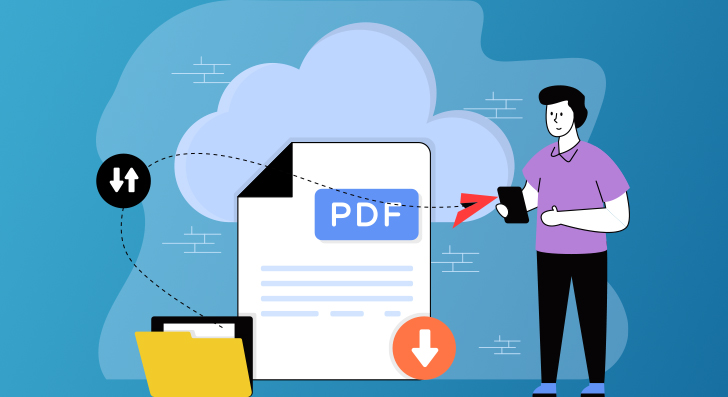The Role of PDF Remediation Services in Enhancing User ExperiencePosted by Andrewleo on August 28th, 2023 The process that modifies or transforms PDF files to ensure their accessibility and usability by people with disabilities is known as PDF remediation. It seeks to improve the overall user experience for a varied audience and bring PDF documents into compliance with accessibility standards like the Web Content Accessibility Guidelines (WCAG). The consistent formatting of PDFs makes them the most commonly used formats for sharing documents across multiple platforms and devices. However, a lot of PDFs are produced without taking accessibility requirements into account, which might present problems for those who have visual impairments, cognitive disabilities, or other accessibility requirements. These issues are resolved by PDF remediation, which makes the content in PDFs readable, operable, clear, and robust for all users.
The PDF remediation process generally involves the following steps: Analysis of the DocumentExamining the PDF document to look for accessibility problems, such as the absence of alternative text for photos, incorrect headings, untagged material, and other things that could make it harder to access. Improvements in StructureModifying the structure of the document by including appropriate headings, lists, and other structural components. This makes it easier for screen readers and other assistive technology to comprehend how the text is organized. Alternative TextIncluding illustrative alt text in charts, graphs, images, and other non-text information. Users who cannot see the visual elements are given context through the alt text. Formatting and LayoutMake sure logical and consistent formatting, layout, and font usage throughout the document. This assists users in following the content more easily. Interactive ElementsMaking interactive elements like dropdowns, buttons, and forms usable and accessible, generally by adding labels and focus indicators. Hyperlinks and NavigationGuaranteeing that hyperlinks are descriptive and meaningful, enabling users to comprehend where the link will take them. Developing navigational tools for documents, such as tables of contents and bookmarks. Testing and ValidationChecking the accessibility of the document using assistive technology like screen readers. Verifying the document's conformity with accessibility requirements. DocumentationAssisting users in navigating and interacting with the accessible PDF by providing instructions or guidance. Ongoing MaintenanceEnsuring that all updates and modifications to the content adhere to accessibility guidelines. PDF remediation services assist organizations in making sure that their content is inclusive and accessible to one and all, regardless of their abilities or disabilities. It is especially beneficial in sectors where accessibility is required by the law, such as in government, education, and other industries that produce content for the general public. Ways in Which PDF Remediation Services Boost User ExperiencePDF remediation services play a pivotal role in improving user experience by making PDF documents more usable, inclusive, and accessible. By ‘tagging’ digital elements in a document, PDF remediation allows the document to be read by assistive technology. Tags provide information about the elements in a document, including images, lists, links, and tables. They also help assistive technology users comprehend the hierarchy and order of the content of the document. Let’s understand some important ways in which PDF remediation services improve overall user experience: Screen Reader CompatibilityScreen readers are used by people who are blind or have other visual impairments to navigate digital content. For PDFs to function correctly with certain assistive technologies, proper formatting is required. Screen readers can accurately read the material aloud with the help of document remediation services. These services optimize the document structure and make it accessible to users who are blind or visually impaired. Accessibility ComplianceScreen readers may struggle to understand poorly structured and labeled PDF documents, rendering them inaccessible to users who depend on these assistive technologies. To maintain compliance with accessibility standards like WCAG (Web Content Accessibility Guidelines), PDF remediation entails adding the proper tags, headings, alt text for pictures, and other metadata. This makes it possible for those with disabilities to access and comprehend the content. Regular FormattingUsers may become confused by inconsistent formatting, font choice, and layout in PDFs. Since PDF remediation ensures a logical and consistent structure, users can more easily follow the material and comprehend how it is organized. Text-to-Speech ConversionThe process of PDF remediation involves converting text elements into a format that can be read by text-to-speech (TTS) software. This allows people with learning disabilities, visual impairments, or reading difficulties to have the document read aloud to them, boosting comprehension and accessibility. Text ReflowIt might be difficult to read PDFs on multiple screen sizes or devices because they frequently have set layouts. In order to adapt the information to different screen sizes without affecting readability, remediation services enable text reflow. Adapting Visual ContentFor screen reader users, PDF images, graphs, and charts must have alternative descriptions (alt text). To make the information accessible to persons who are blind or visually impaired, PDF remediation makes sure that these visual features are supplemented by descriptive text. Ethical and Legal ConsiderationsThe provision of accessible content is mandated by law in many jurisdictions, particularly in the public and educational spheres. By ensuring that their content is available to all users, PDF remediation services assist organizations in avoiding legal problems and promoting ethical practices. Easy Document NavigationComplex structures like tables of contents and internal linkages are frequently seen in PDFs. Remediation services make sure that these elements are effectively labeled and functional. This makes it simpler for consumers to navigate inside the page and locate pertinent portions. LocalizationRemediation services help with the appropriate localization of a document. Effective language tagging and text direction for languages that read right to left are also included. Overall, PDF remediation services contribute to a more inclusive digital environment where people with disabilities can get access to and engage with information on an equal basis. This boosts user experience for individuals with disabilities and also benefits all users by boosting the overall efficacy and usability of PDF documents. Like it? Share it!More by this author |



